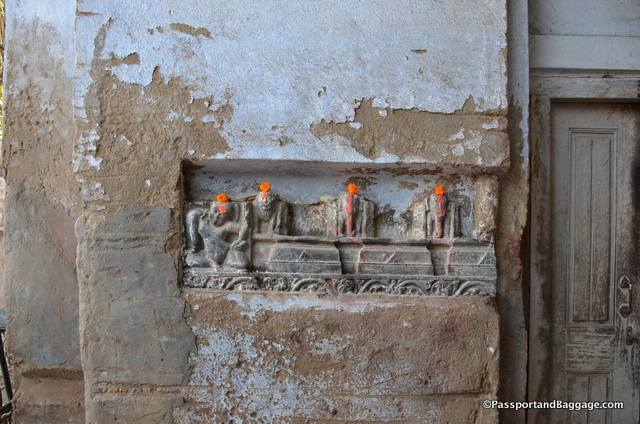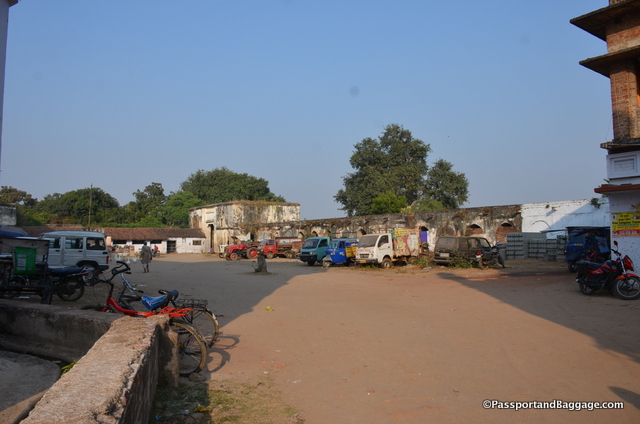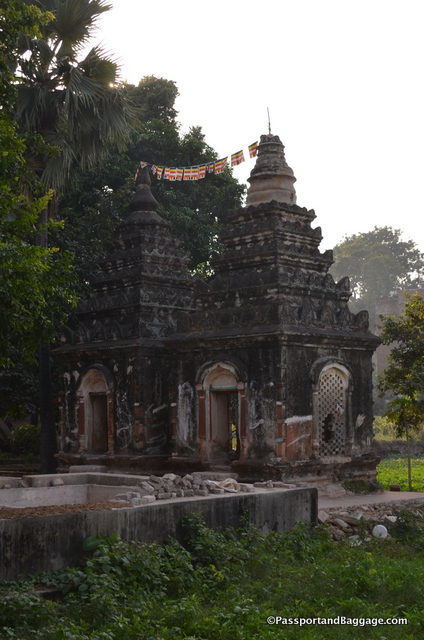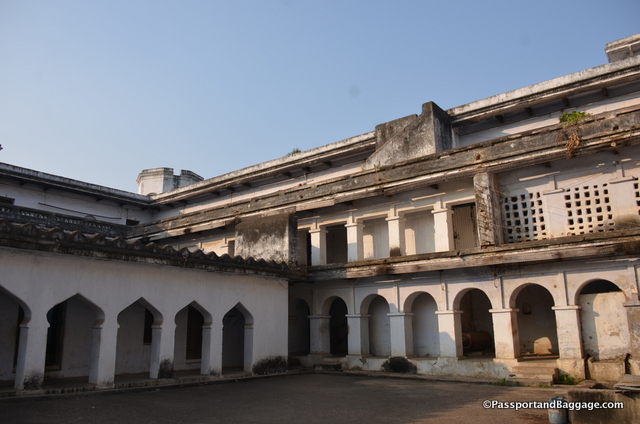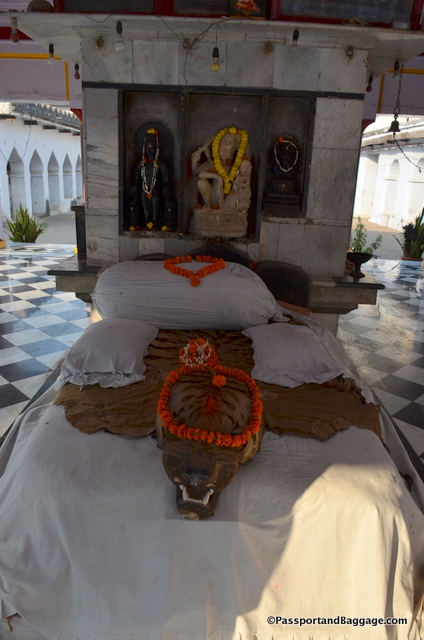December 2017
Wandering the town of Bodhgaya I could spot this old building peaking above the normal height of many of the other buildings, but it took walking down a dirt alley to actually get to it.
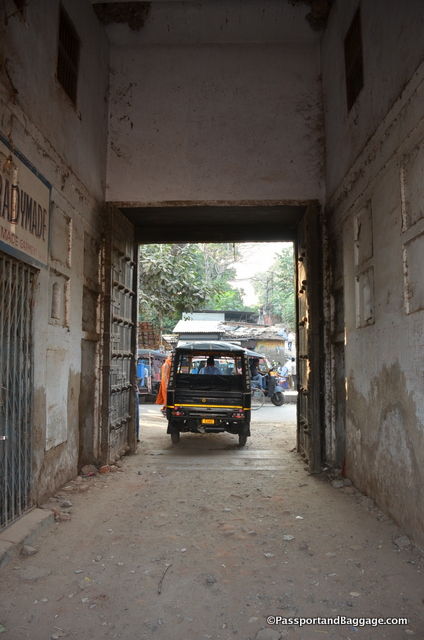
Looking back on a set of beautiful wooden doors that led to the little dirt pathway where I found an odd array of dilapidated structures.
It took me some research to find that it was called the Math, which is a word I could not find any meaning or etymology for. It is also called the House of the Mahant, and it has taken me quite a long time to find much about what I saw.
Essentially the Mahabodhi Temple of Bodhgaya was a very important Buddhist site until the first part of the thirteenth century A.D. and its destruction by Turk invaders. There is no information regarding the temple from the time of the Turkish invasion to the time of the arrival in the area of the temple, of a wandering Sanyasi (Saivite Hindu monk) named Mahant Ghamandi Giri in 1590.
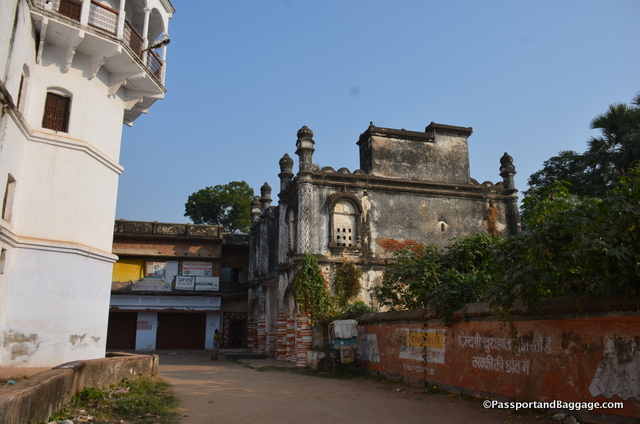
The building that caught my eye. The buildings are occupied by squatters and it is very difficult to find anything about the site
The Shaivaite monastic institution grew to be an extensive landed estate surrounding the Mahabodhi Temple that may have covered as much as 17,000 acres. The Math, rose to prominence during the Mughal and British colonial periods, especially after a royal grant during the time of the late Mughal rulers. A supreme court ruling of 1987 limited the Math to a holding of just 100 of those acres.
The Math contained the ruins of old temples and many of these were used in the construction of new temples and buildings within the Math. Many of the images, earlier used as decorative panels in the older temples, became objects of worship by the Mahants and the local populace.
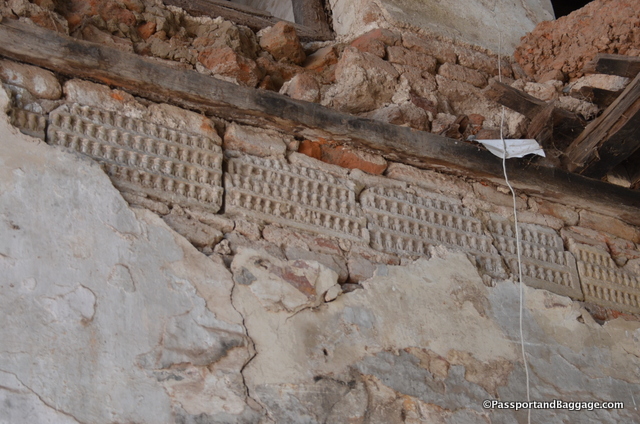
These rows and rows of Buddhist images are inside the archway of the structure that originally caught my eye. Passing through the archway your enter a garden area with more structures beyond
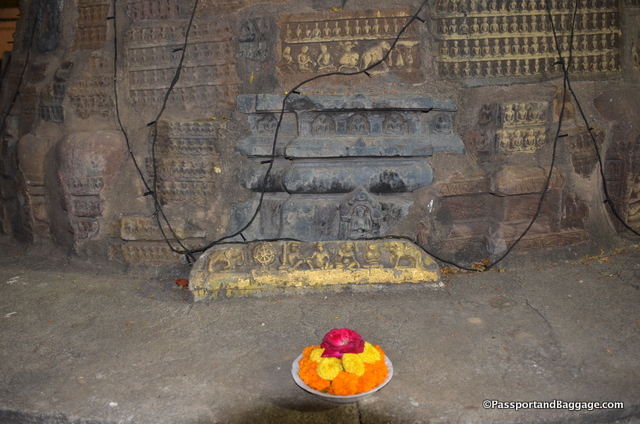
The same small Buddhas can be found embedded in many of the votive stupas inside the Mahabodhi temple complex
Dr. Francis Buchanan, an explorer with the East India Company first visited the area in December of 1811 and wrote:
“This person in the course of his penitent wanderings came to this place, then overrun with wood and bushes, and finding the temple a convenient shelter, took up his abode in it, until his extraordinary sanctity attracted the notice of numerous pilgrims and he became a principal object of veneration among the powerful chiefs and wealthy merchants who occasionally frequented Gya. From these, he received the various endowments which his successors enjoy.”
“I went to Buddh Gaya, distant from the south end of (the) Sahebganj near six miles, and situated on the west side of the Fulgo. The houses and gardens of Gaya extend about 1.25 miles south from Sahibgunj. The country through which I passed, overloaded with plantations. I was here visited by and visited the Mahant, who received me very civilly, and his principal chelas, who have been very great travelers, were fond of talking on the subject, and had here laid aside the habit of begging; on the contrary, they are here exceedingly charitable or hospitable.”

There is a nice field that serves as a vegetable garden through the archway of the building that first caught my eye.
The Building maintains much of the same appearance it had in the times of Buchanan. Buchanan goes on to describe the math:
“The convent is surrounded by a high brick wall containing a very considerable space on the banks of the west branch of the Fulgo, between it and the great temple of Buddh Gya. The wall has turrets in the corners and some at the sides, and has two great gates, the handsomest part of the building.”
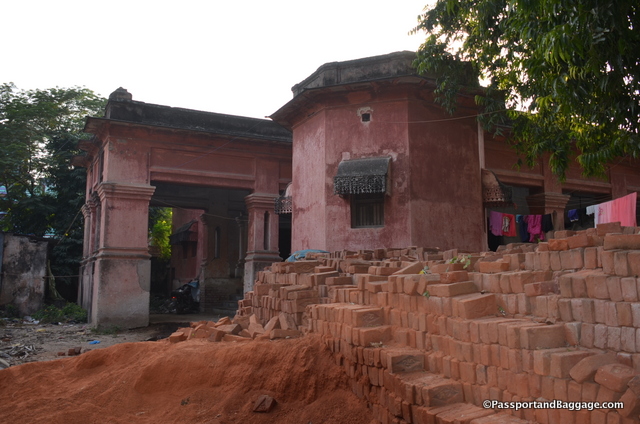
Just past the votive stupas is this beautiful red, very British looking building. It is a home for squatters.
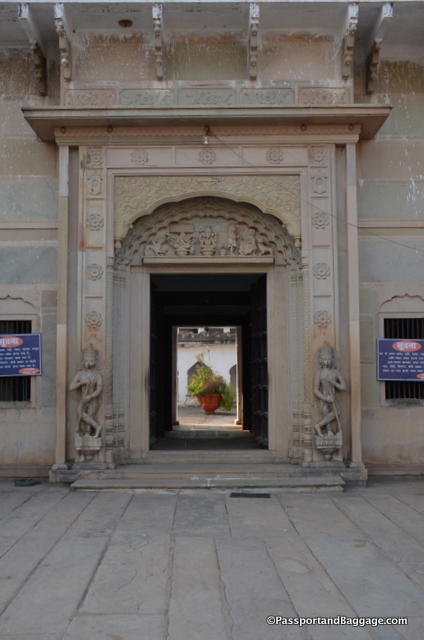
Walking back through the Buddha ornamented archway and on to the other side of the big open courtyard is an entry doorway to the Mahant’s residence.
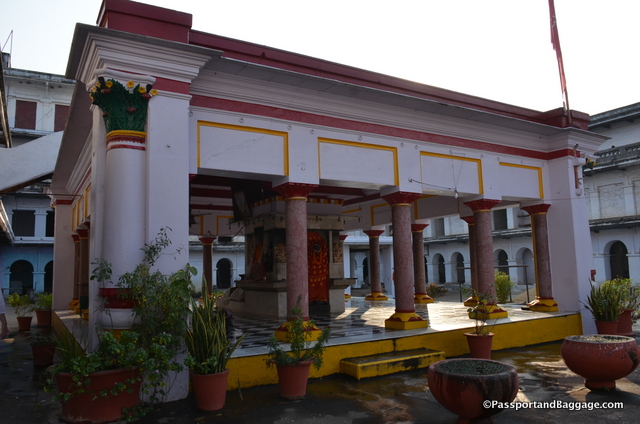
Inside the courtyard of the Mahant’s residence is a raised platform with a marble floor and a Hindi shrine.
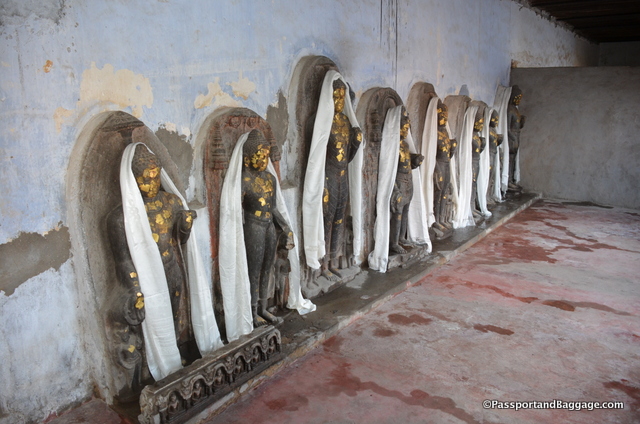
Peeking into the rooms of the Mahant’s residence you find a Buddhist shrine. These are most likely statues that once stood in the Mahabodhi Temple

I have done a lot of research and could find no information as to what this is, what is says or why it is there. It sits inside one of the votive stupas in the garden and has, what appears to be, Sanskrit, Thai and Burmese writing.
It was a great day tripping upon a very ancient and historic set of buildings, it is sad that they are in such a state of disrepair and in the hands of squatters. One must, however, realize how many millions of ruins that stand in India, and just one more is obviously just something that would cost money if it were renovated or cared for.
It shows you, getting lost, looking around or just pursuing odd things you see, always makes for a great adventure.
An 1883 study of the Math is available here.
